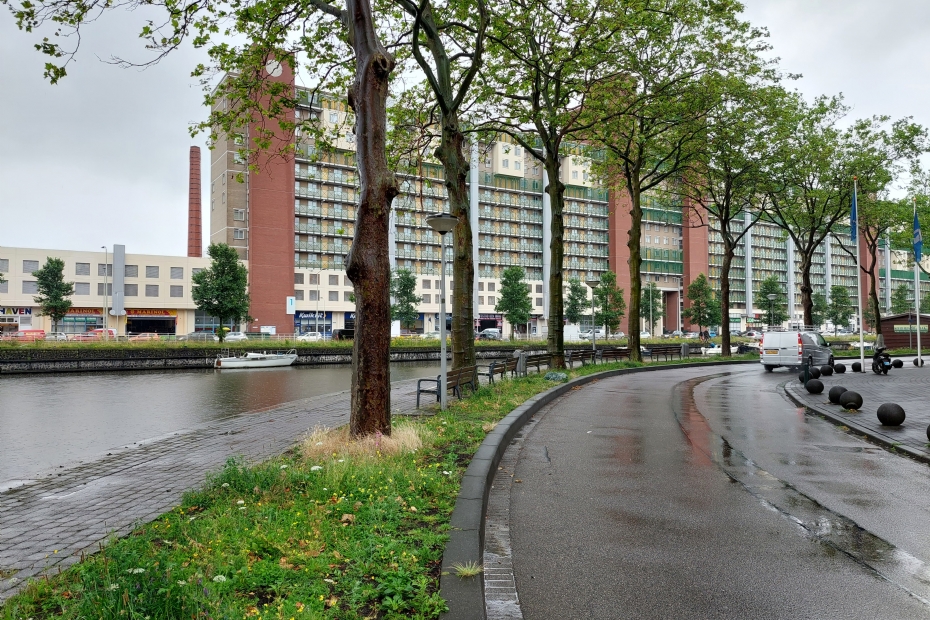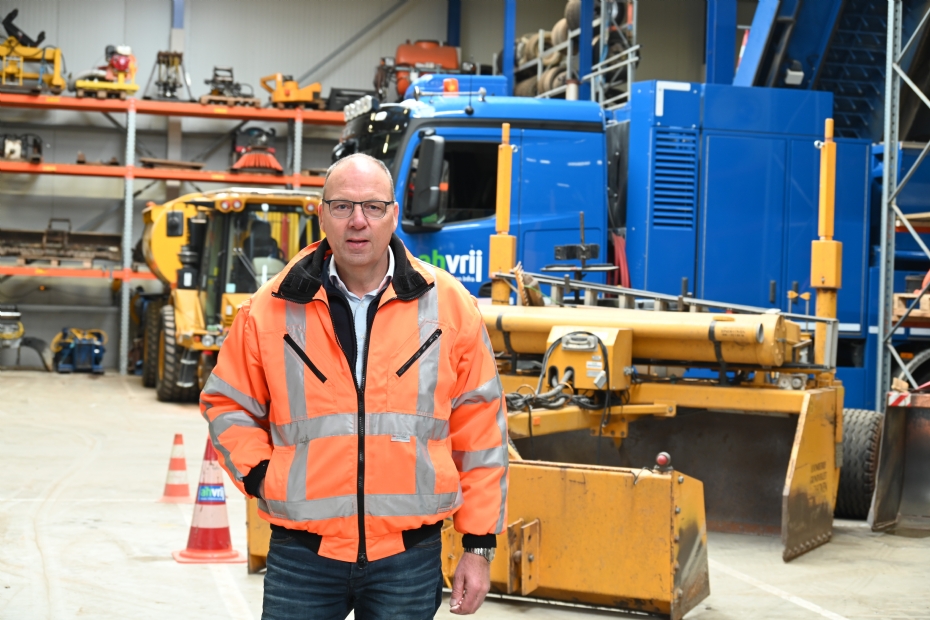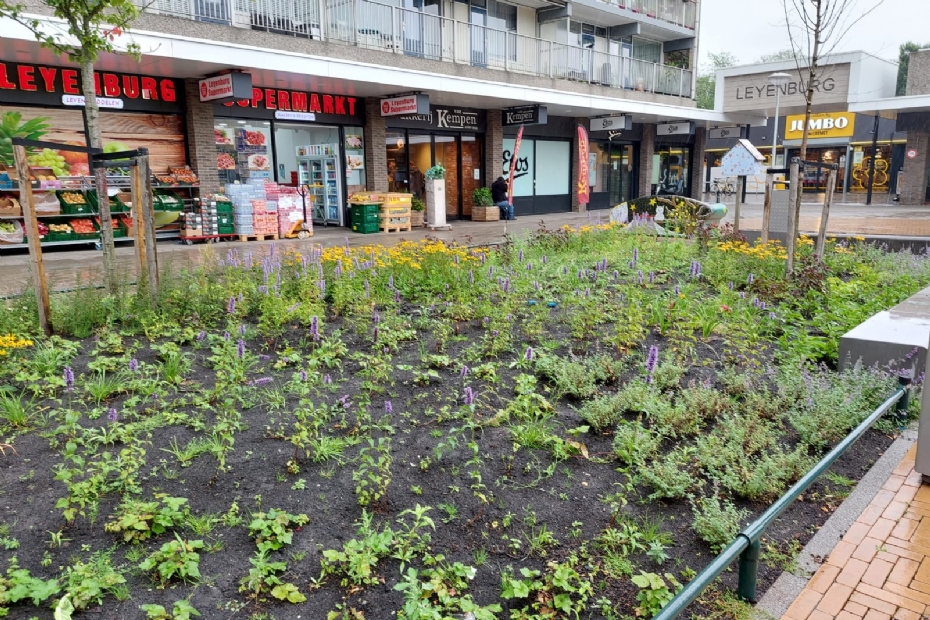Tree substrates without environmental debt: how far have we come? |
|
|
|
|
 |
| 226 sec |
Sustainability of tree substrates: a shared quest for renewable alternatives
The use of peat in tree substrates is under increasing pressure. Municipalities, suppliers and certification bodies are searching for practical alternatives to make urban planting sites both sustainable and functional. During a webinar by Royal Association for Urban Development Stadswerk Nederland, Rob Scholman (RHP) and Roeland Lelieveld (Municipality of The Hague) provided an up-to-date overview of the current situation. The search for renewable raw materials offers opportunities, but also introduces new risks and technical challenges.
| At AH Vrij with alderman Robert Barker |
Tree substrates are more than a random mix of sand and organic matter. They form the foundation for decades of healthy tree growth, often under challenging conditions in urban soil. According to Rob Scholman, substrates must meet a broad set of chemical, physical and biological requirements: from pH and nutrient balance to water retention, oxygen supply, load-bearing capacity, disease resistance and minimal weed pressure.
Peat was a favourite
For decades, traditional stable materials such as low peat were widely used. This material is readily available (especially in the Netherlands), has a stable structure and favourable CEC value. However, like high peat, low peat is not truly renewable. The sector is therefore increasingly looking at organic residual flows and fast-growing crops as alternatives.
 | | Test location Verheeskade in 2024 |
|
|
Renewable raw materials: broad range, not without risks
A wide array of renewable raw materials is now being explored within the sector. These include wood fibre, coir, green compost, paludiculture crops (such as cattail and reed), thermally treated woody compost, biochar, and various agricultural and industrial residual streams. Some materials are already in practical use, while others are still in the experimental phase. However, these new sources also come with risks. Scholman pointed out concerns such as pesticide residues, human pathogens, invasive exotics and physical instability in young organic materials. Recent research showed that 69% of analysed green compost samples contained residues. Monitoring, quality assurance and certification through labels such as RAG are therefore essential.
|
|
Recent research showed that 69% of analysed green compost samples contained residues.
| |
|
Why replace peat?
Peat — both high and low — has long been an important component of (tree) substrates due to its stable structure, excellent water retention and high cation exchange capacity. However, peat extraction causes significant CO₂ emissions and disrupts natural areas, especially in the case of high peat. Oxidation of extracted peat layers releases stored carbon as CO₂, contributing to climate change. Moreover, Dutch low peat is becoming increasingly scarce. Sand extraction companies are more often leaving peat in place to limit CO₂ emissions. This makes the search for renewable alternatives even more urgent.
|
Sector-wide agreement: on the road to 2050
To guide the sustainability transition, a sector-wide agreement was established in 2022. Government, industry, certification bodies and customers are working together on a path towards climate neutrality by 2050. Concrete interim targets have been set for 2025: at least 35% renewable raw materials in the professional market and 60% in the consumer market. Peat will not be phased out abruptly, but its share will gradually be reduced. The use of remaining low peat will still be permitted if it meets strict criteria, such as functional excavation and full certification.
Practice: trials in The Hague
In recent years, the Municipality of The Hague has initiated several pilot projects to test the practical use of low-peat and peat-free substrates. Roeland Lelieveld provided insights into these pilots. In collaboration with AH Vrij, Nationale Bomenbank, Terra Nostra and the Municipality of The Hague, various mixtures are being tested. These include thermally treated woody compost (Den Ouden), RAG-certified compost, biochar, and clay-containing fractions. The mixtures range from conventional to completely peat-free.
AH Vrij is responsible for the practical implementation of the trials and the construction of the planting sites, and also produces the growing media. Their practical expertise ensures the new mixtures are applied under realistic conditions. Terra Nostra oversees the extensive monitoring programme. Using sensors and annual measurements, factors such as soil moisture, compaction and leaf performance are tracked. Test trenches are also dug to assess root development. This long-term monitoring provides valuable insights into the performance of different mixtures under real-world conditions. Nationale Bomenbank contributes expertise in evaluating tree growth and planting site quality, both during implementation and in the follow-up maintenance phase.
 | | Jan Vrij |
|
|
Certification
"To be able to use the various renewable raw materials, the RAG certification is essential. This label assesses the entire process, not just the end product. Moreover, it can be effectively combined with existing standards, such as those in the Tree Manual. Clients should be encouraged to request RAG certification more frequently," says Jan Vrij, director of AH Vrij.
|
 | | Test location: Monnikendamplein 2024 |
|
|
Trial locations in The Hague
The trial locations in The Hague — including Verheeskade, Monnikendamplein and Calandkade — differ in their starting conditions. Some plots have been completely renewed, others are located in existing planting sites with only local interventions.
What is biochar?
Biochar is a type of charcoal produced by heating organic material without oxygen (pyrolysis). This results in stable carbon structures that hardly break down. In tree substrates, biochar helps to retain water and nutrients. Its many small pores create an airy structure that also benefits soil life. An additional advantage is its ability to store carbon long-term, contributing to cities' climate goals. That's why biochar is being tested in The Hague as part of peat-free mixtures. Speaker Rob Scholman (RHP): "A risk of biochar is that due to pyrolysis, the product can have a very high pH, which limits its applicability in high proportions within sustainable substrates."
|
|
|
The first measurements from The Hague show mixed results. Some mixtures retain too much moisture (still), posing a risk of oxygen shortage in the root zone.
| |
|
First results: mixed picture
The first measurements from The Hague show mixed results. Some mixtures retain too much moisture (still), posing a risk of oxygen shortage in the root zone. The impact on older trees, which already showed growth stagnation, remains unclear after two years. Lelieveld stresses the importance of long-term monitoring to reliably assess performance over multiple years. The availability of sufficient renewable raw materials is also a concern. Many residual streams have competing uses, such as in construction or as fuel. In addition, the production costs of innovative mixtures are currently higher. The sector thus faces both an ecological and economic optimisation challenge.
Collaboration as key
Both Scholman and Lelieveld emphasise in the webinar the importance of sector-wide collaboration. Municipalities, producers, certification bodies, knowledge institutions and implementers such as AH Vrij, Terra Nostra and Nationale Bomenbank must work together to develop safe, high-quality and sustainable tree substrates. The path toward future-proof planting sites is clearly under development, say both speakers. "Step by step, a new generation of tree substrates is being created — to benefit both trees and the climate."
This article was previously published on 17 June 2025 on the Boomzorg website.
| Vereniging Stadswerk Nede... | |
| AH Vrij Groen, Grond en I... | |
| Gemeente Den Haag OCW, Bu... | |
| |
| LOG IN
with your email address to respond.
|
|
|
| There are no comments yet. |
|
| |
Anyone can place small ads for free through their own account.
Place a free ad
|
|
|
|